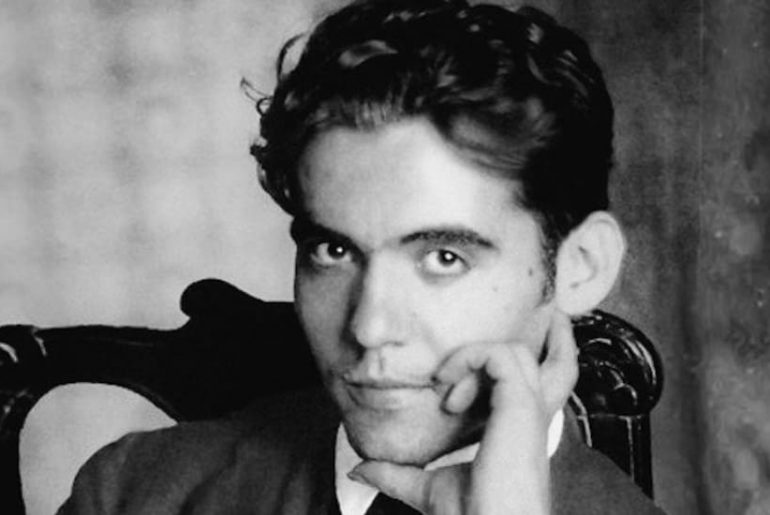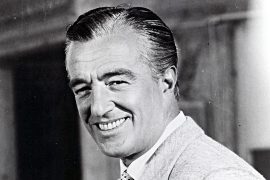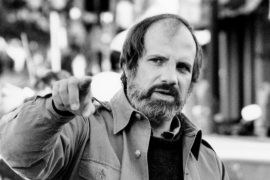The most famous and translated Andalusian poet is undoubtedly Federico García Lorca. You may have heard his name before, but you’ve probably never read anything by him or seen him at the theater.
Federico García Lorca – biography, poems, plays
Lorca’s confrontation with the Spanish traditions of his time, interspersed with surrealistic elements, as well as Lorca’s importance for Spaniards in our time is difficult for Germans to understand. Not only because his poetry can only be insufficiently translated from Spanish into German, but also because probably only a Spanish native speaker can emotionally understand and appreciate the poet’s eloquence and cultural background.
In 1898 the Spanish world empire came to an end with the lost war against the USA over Cuba and Spain was gripped by a deep crisis of national identity, which culminated in the horror of the Spanish Civil War in 1936. The far too short life of Federico García Lorca took place between these two catastrophes.
Lorca was born and raised in Fuente Vaqueros near Granada in 1898. His father was a wealthy farmer and his mother a village schoolteacher, who sparked Federico’s interest in music and literature. In 1909 the family moved to a beautiful town house in Granada, where Federico attended high school. He then wanted to study music, but chose law on his father’s advice. Philosophy and Literature from the University of Granada. Here he came into contact with Andalusian poets and undertook study trips with Martín Domínguez Berrueta, a professor of literature and art. Lorca read works by the Russian anarchist Kropotkin and the German philosopher Friedrich Nietzsche.
In 1918 Lorca published his first volume of poetry, Impresiones y paisajes (Impressions and Landscapes). His father financed the printing of his first work. Lorca was a fan of Shakespeare, Goethe, as well as Spanish poet Antonio Machado and Nicaraguan writer Rubén Dario.
In 1919 Lorca moved to the University of Madrid. The painter Salvador Dalí and the later filmmaker Luis Buñuel also studied there, with whom a close friendship developed. In 1921 Lorca published a second volume of poetry and joined the Madrid theater scene. His first theatrical production, El maleficio de la mariposa (The Bewitchment of the Butterfly), was about a love story between a butterfly and a cockroach, but was not a hit with audiences.
Lorca suddenly became famous in 1928 with the book of poems Romancero Gitano (Gypsy Romances). As a homosexual, Lorca was on the fringes of society and felt drawn to the Gypsies (Gitanos), who were also a socially outlawed group and were harassed by the Guardia Civil.
In 1929 the friendship with Dalí and Buñuel broke up, both of whom moved to Paris. There are indications that Lorca’s only hidden homosexuality was the reason for the quarrel with Dalí. Other sources report that Lorca was appalled by the first surrealist film, Un chien andalou (An Andalusian Dog), which Buñuel and Dalí shot and screened in Paris. The film shows a man cutting through the eye of a woman sitting in front of him with a razor.
The break with friends led to depression in Lorca. Therefore, his father sent him to New York, where Lorca witnessed the stock market crash on Wall Street in October 1929, which he addressed in his work Poeta en Nueva York. In 1930 Lorca traveled on to Cuba, where he was celebrated for his volume of poetry Romancero Gitano. He wrote to his parents: »Don’t forget that in America there is more to a poet than to a prince in Europe«.
When Lorca returned to Granada in June 1930, the king had abdicated and the republic had been proclaimed, and Lorca soon championed its democratic goals. The government appointed him director of the Teatro Universitario La Barraca. This student traveling theater should bring the culture to the simple rural population. Back then, 50% of Spaniards were illiterate. So Lorca brought the Spanish classics like Cervantes or Lope de Vega to the villages. In 1933 he published his most famous play, Bodas de Sangre (The Blood Wedding), with which he had great success at Madrid’s Teatro Beatriz. From 1933 to early 1934, Lorca traveled to Argentina and Uruguay. The American premiere of Blood Wedding took place in Buenos Aires in October. There Lorca became friends with the Chilean poet Pablo Neruda.
On his return to Madrid in January 1934, Lorca found a chaotic political situation. The conservatives had won the election, left and right fought each other on the streets. Lorca put his signature at the head of an appeal for the salvation of the Spanish Republic and signed several anti-fascist manifestos. In 1934 Lorca’s play Yerma was staged at Madrid’s Theatro Español. In 1935 Lorca had reached the peak of its popularity. Romancero Gitano became the best-selling book of poetry of the century.
By the summer of 1936, Lorca had finished his play La Casa de Bernarda Alba and was traveling to his parents’ country house to relax. There he was surprised by General Franco’s putsch. Three days after the start of the Spanish Civil War, the putschists occupied Granada. Lorca took shelter at friends’ house in Granada. Although their sons were leaders in the Granada Falange, which was loyal to Franco, they could not prevent Lorca from being arrested by the putschists, deported to Víznar and shot on August 19, 1936 along with two other republicans and buried on the side of the road.
The location of the grave is still unknown to this day. After the execution, one of the killers boasted that he “shot him twice in the ass because he was gay.” The death of the poet, who was popular across all political camps, was always embarrassing for the Franco regime. There were numerous attempts to reinterpret the murder as a war-related “misdemeanor” or even as a vendetta among homosexuals.
During the Franco dictatorship, Lorca’s work was banned in Spain. The brutal assassination of Lorca, on the other hand, raised his profile around the world and gave him the unjustified reputation of being the quintessential Spanish political poet. In fact, Lorca has always avoided politics. He once declared: I am revolutionary because every real poet is revolutionary. But politically, I will never be! He also refused to be politically co-opted by the communists.
Notes on the work of Federico Garcia Lorca
In Spain, Lorca belonged to the »Generation of 27« group of poets. Their other members are almost unknown in Germany, so I will not go into further details here. The group endeavored to bring Spanish poetry closer to European modernity, although it was always important to Lorca not to break the connection to Spanish traditions. The “hunt for the bold metaphor” was the main stylistic feature of the group of poets. In contrast to earlier periods of poetry, the metaphor should not be used as decoration, but as the substance of poetry. With a metaphor, the actual term is replaced by a term from a completely different context of meaning, which should sound more descriptive and linguistically more interesting. For example, the word camel could be replaced by the term desert ship. The most striking thing that the poets of Generation von 27 have in common is free verse form and the absence of rhymes. The group felt inspired by the fame that other Spanish artists and great thinkers of the 1920s had already achieved, such as Picasso, Miró, Ortega y Gasset or Manuel de Falla. He had a deep friendship with de Falla, since Lorca actually wanted to study music. With him he often visited the Alpujarras south of Granada, where they studied folk tunes.
Lorca was influenced by Ramón Gómez de la Serna, considered a prophet of the avant-garde in Spain. Serna circulated the first translations of the manifestos of the Futurists and DADAists in Spain. He created the concept of Gregueria. By this he understood the combination of humor plus metaphor. Here’s an example: “The zoo is something of a lunatic asylum for animals.” Lorca embodied the center of this movement. He wasn’t the type of poet who withdraws more than anyone else, but the type who makes the most connections.
In a lecture, Lorca described the mainspring of his poetry using the terms muse, demon and angel in art: »Angel and muse come from outside; the angel bestows talent, the muse form… But the demon must be aroused in the last dwellings of blood… a mental wind that persistently blows over the heads of the dead, in search of new landscapes and unfamiliar accents.«
Lorca believed that modern metaphor had the ability “to merge sensory impressions, to reverse cause and effect, to blur the real, to personify objects and inanimate beings.” Lorca lived out this type of modern metaphor in his volume of poetry Romancero gitano. Here is the example Reyerta (dispute):
“In the crown of an olive tree two ancient women weep,
during this fight the bull rears up against the walls
Black angels brought cloth, water from melted snow –
Angels with mighty wings made entirely of Albaceter knives.”
Through his friendship with Salvador Dalí, Lorca also introduced surrealistic elements into his poetry, particularly in the poetry collection Poeta en Nueva York, which was only published after his death in 1940. Also here is an excerpt:
»On the terrace I fought with the moon.
Swarms of windows pierced one leg of the night.
Heaven’s gentle cows drank from my eyes.
And on Broadway’s panes gray as ash,
pounded the breezes with very long wings.”
Lorca’s plays were mostly about how the will for freedom and the longing for modernity are hindered by the rigid Spanish traditions. He processed this topic in the trilogy trilogía de tragedias rurales, which consists of the plays Bodas de Sangre, Yerma and La Casa de Bernarda Alba. It is always about a woman who marries or is about to marry the man her parents have chosen for her and an extramarital relationship with a man whom the woman really loves. In the end there is usually the death of the woman or the rival.
From today’s German point of view, it seems a bit kitschy and unworldly, but in Lorca’s time it inspired the Spanish audience because it obviously reflected the reality of their lives.
In 1935 Lorca wrote his last drama, which he called Comedia sin título (untitled comedy). The play was intended to be in three acts but was left unfinished with just one act and was first performed in 1989 at the Teatro Maria Guerrero in Madrid. In this work, Lorca mixed performers and audience. It is also Lorca’s most political play, with references to Bertolt Brecht.
In his last years Lorca worked on the book of poetry Diván del Tamarit. Love and death are the dominant themes. The work was intended as a homage to the Arabic traditions of Andalusia. Due to the beginning of the Spanish Civil War, it was no longer published. Lorca’s sister Concha saved the manuscript. His exiled brother Francisco García Lorca published the work in New York in 1940.
Here is the example »The Surprising Love« (Gacela del amor imprevisto) from the poetry collection Diván del Tamarit:
No one understood the dark magnolia scent on your stomach.
Nobody knew that between your teeth you were torturing a hummingbird of love to death.
A thousand little Persian horses slept in the square in the moonlight of your forehead,
while I clasped your waist, enemy of snow, for four nights.
Between plaster and jasmine your gaze was a pale twig with seeds.
I sought, as a gift for you, in my breast the ivory letters that forever, forever,
mean forever: garden of my torment,
your body forever fleeting, the blood from your veins in my mouth,
your mouth already lightless to my death.
In 1934, the Jewish advertising executive Heinrich Enrique Beck fled from the Nazis to Spain. There he met Lorca and, with the help of a Swiss lawyer, Beck managed to acquire the German translation rights for Lorca’s complete works. Beck was not a gifted translator, but in Germany his heirs managed to ensure that only Beck’s translations were allowed to appear until Suhrkamp Verlag put an end to this through a court decision, so that more professional translations could appear from around 1996. So if you want to read a translated work of Lorca, first check who translated it.
Why was Federico García Lorca so important?
In a career spanning just 19 years, Federico García Lorca resurrected and revitalized the most basic strains of Spanish poetry and helped inaugurate a second Golden Age of the Spanish theater.
What is Federico García Lorca’s most famous poem?
‘Ballad of the Moon, The Moon’ (from Gypsy Ballads, 1928) The poems of Lorca’s most famous collection explore the life and culture of Andalusian Gypsies, a people that Lorca was fascinated by and about whom he wrote with deep understanding.
Why was Federico Garcia assassinated?
García Lorca was assassinated by Nationalist forces at the beginning of the Spanish Civil War. His remains have never been found, and the motive remains in dispute; some theorize he was targeted for being gay, a socialist, or both, while others view a personal dispute as the more likely cause.
What were Lorca’s poems about?
Lorca published numerous volumes of poetry during his career, beginning with Impresiones y paisajes (1918). His lyrical work often incorporates elements of Spanish folklore, Andalusian flamenco and Gypsy culture, and cante jondos, or deep songs, while exploring themes of romantic love and tragedy.
Who is the best Spanish poet?
Rosario Castellanos.
Pablo Neruda.
Federico Garcia Lorca.
Octavio Paz.
Lope de Vega.
Gustavo Adolfo Becquer.
Jose Marti.
Jorge Luis Borges.
What is the literary style of Federico García Lorca?
In his early years, García Lorca’s poetry was marked by the Spanish Modernismo style—a style of particularly overwrought, melodramatic Romanticism—as well as by the Surrealism of Spanish artists such as Salvador Dali, with whom he collaborated closely.





